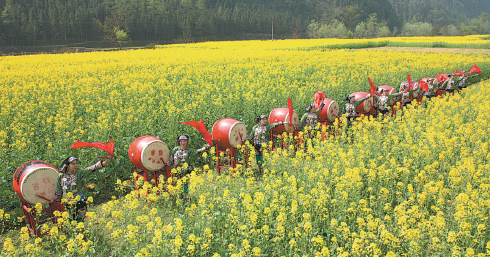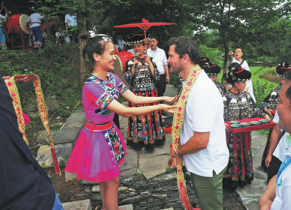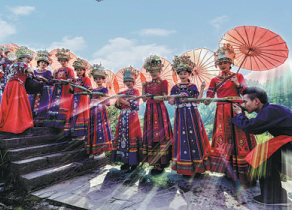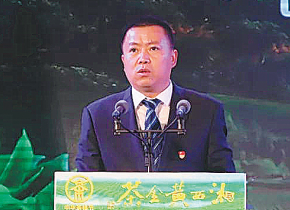Rural tourism thrives on better transport links
More than a transport artery, the Aizhai Bridge has brought wealth to rural residents nearby in the way of tourism development, contributing greatly to poverty alleviation efforts, local officials said.
As a national 4A tourist attraction, the second-highest level for a tourist attraction in China, the Aizhai Wonders Tourist Area includes the Aizhai Bridge, the Jidou Miao village and Dehang Grand Canyon.
The tourist area has played a role in boosting economic development of surrounding villages.
One beneficiary is the village of Paixiong in Aizhai town, which has become popular among tourists wanting to get away to the country.
The village now is home to 108 homestays and 47 farmhouses, creating more than 400 jobs.
Long Xiucheng, a Paixiong local, works as a manager in the tourist area. Thanks to the boost in tourism and supportive policies aimed at improving social welfare, he and his family now run homestays and were lifted out of poverty in 2016.
Since 2015, the nearby city of Jishou has promoted the improvement and construction of the tourist area to optimize transportation, environment and local services, in an effort to promote it to a 5A scenic area status-the highest in the country.
Over the past nearly six years, the local government has invested 450 million yuan ($68.8 million) into promoting the tourist area, with the average annual investment surpassing 60 million yuan.
Jishou has five star-rated rural tourist areas, 18 pilot tourism villages and 16 travel agencies. It is home to nine tourism merchandise production companies, and more than 40,000 people engaged in the tourism business, according to local officials.
In the village of Pinglang in Aizhai town, Pinglang tofu is a specialty food and a prosperous business for local people.
Made with green husk broad beans and spring water, the tofu is produced using traditional techniques and is popular among visitors, locals said.
Across the canyon from the bridge sits an ecological tea garden located in the Bacengpo tea base at the height of 720 to 860 meters above sea level. Last year, the tea garden produced 1,500 metric tons of tea, achieving an output value of 870 million yuan.
Another major production area for Xiangxi golden tea is in the village of Aikou, where during the picking season can have as many as 5,000 people working.
Thanks to the improved transportation, and especially the Aizhai Bridge, it is convenient for more villagers to become migrant workers, said Xiang Tianshun, Party secretary of the village.
Zhu Youfang contributed to this story.















